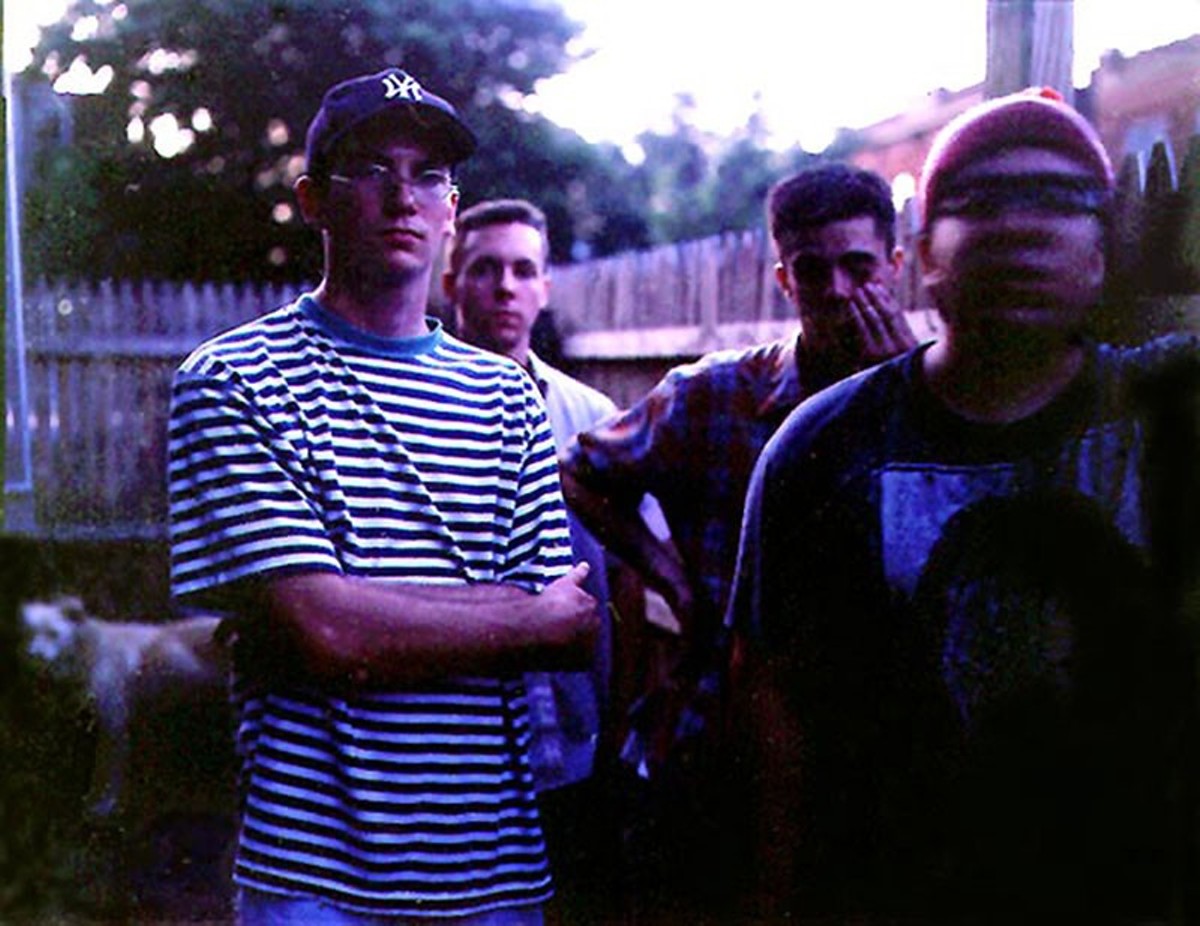Tim Garrigan joined Dazzling Killmen, the now-defunct St. Louis powerhouse credited as a pioneer of math-rock, in the early '90s, after the band had already been established as a power trio, with one full-length and two singles. After playing as a guest on 1993's Medicine Me EP, he was brought into the band proper, and promptly started on songs that would make up the band's seminal release, Face of Collapse.
Garrigan lived in what he calls "the middle of nowhere, Illinois" with bassist Darin Gray. He distinctly remembers the smell of gas, heavy in the air from a nearby refinery, while the two hashed out guitar and bass parts. Between studying music at Southern Illinois University Edwardsville and the band's day-long practices, he and Gray spent time carving out songs with a scalpel — and a laser focus. Most of 1993 he recalls as a year spent with tunnel-vision.
"I felt like the band was on this mission," Garrigan says. "In my world, there was very little going on outside of going to school and studying records. Music was just everything."
Decades later, thanks to that hard work, Dazzling Killmen enjoy even more accolades than in the band's heyday. In 2013, Dillinger Escape Plan's Ben Weinman penned a piece for UK magazine The Skinny claiming that "most of the great progressive underground bands of the '90s would not exist if it weren't for them." Alternative Press' Loud Life section even declared Face of Collapse the top album of the '90s.
On November 11, Face of Collapse saw a re-release through Skin Graft Records — the same label that released the first pressing, in March 1994. But to call this simply a reissue, or even a remaster, would be misleading. The record will come in a full-color gatefold sleeve with a bonus LP containing the band's "Medicine Me" single, an alternative version of "My Lacerations" and a cover of Public Image Ltd's "Poptones." Side four features silkscreen work from cover artist Paul Nitsche. The book inside (twelve inches by twelve inches) offers an oral history of the band, along with deluxe art from Rob Syers, Mark Buckheit and others who helped establish early Skin Graft releases with comics and illustrations.
For label founder Mark Fischer, Dazzling Killmen has been in Skin Graft's DNA from day one.
"The first Skin Graft Records release was a seven-inch and comic book set with Dazzling Killmen, and then a few years later, Skin Graft's first full-length was Face of Collapse," he explains. "[The album] had been on my short list of LPs to reissue for years, but when I realized that 2016 was going to mark the label's 25th anniversary, doing something special with it felt like the perfect way to mark the occasion."
Face of Collapse was recorded in September 1993 by no less than Chicago's Steve Albini, who by this time had made a name for himself engineering records for luminaries such as PJ Harvey, the Pixies and the Jesus Lizard. In fact, the group was in town the very same weekend that Albini received the master for an album he recorded earlier that year — Nirvana's In Utero. Albini had worked with Dazzling Killmen one year prior on Dig Out the Switch, the band's debut album, produced by Wilco frontman Jeff Tweedy. This time around, Albini offered the group a discounted rate if its members would help assemble records for the debut of his new band at the time: Shellac.
"We were so much more of a live band than we were a studio band, so we basically just got set up in the studio and played," says drummer Blake Fleming, who helped kickstart Dazzling Killmen at seventeen years old. "Maybe 80 percent of what you hear on the album is first takes. And to my knowledge, there were no overdubs, no patching in or fixing mistakes."
Says Albini, "Harmonically, they were more sophisticated than a lot of the bands that they were peers with. They had a more intricate rhythmic sense, and the guitars weren't just playing the framework of the song. They were putting up this screen of sound, and the bass supplied the structure underneath."
Fleming credits the group's strict practice schedule for the smooth studio process. But for all the band's preparedness, guitarist, singer and founding member Nick Sakes admits to writing much of the album's vocals there in the studio. Since he didn't own a P.A., rehearsals were mostly instrumental.
"I kind of had an idea of what I wanted to do, but I remember waking up in the morning before everyone else in a cold sweat like 'Oh shit, I really gotta finish these fuckin' lyrics,'" Sakes says. "Yes, I thought about them a long time, but I hadn't really cemented them."
From the visceral grunts and mouth sounds on "Agitator" to the stark declarations of never forgiving (and never forgetting) on "My Lacerations," many of the lyrics feel cryptic — made no less confusing by the lack of a proper lyric sheet. Yet Sakes' performance has stuck with Albini, even to this day.
"The singing wasn't super tuneful, but that was typical of the day," Albini says. "They didn't fall into the trap of having an ejaculatory sound — there was an emotional arc to the singing."
Of the band's four members, Fleming had the heaviest hand in the reissue, helping to coordinate audio needs for two separate remasters. He counted on Jason McEntire of Sawhorse Studios in St. Louis to restore the original analog tapes so the vinyl release adheres to the original sound. The digital version received a more liberal remaster, as Andris Balins of Dryhill Studios in New York worked to boost the volume while retaining a wide dynamic range.
"I'm just glad that the material survived," Albini says. "There was a changeover in the studio business from the analog era to the digital era. So it'll be difficult to impossible for something like this to happen in another twenty years for bands whose masters weren't analog. So I'm pleased that my commitment to the analog methods have proven themselves useful to another band."
Formed in 1990, Dazzling Killmen called St. Louis its home base until its members parted ways in 1995. They would drift away from the city, playing in bands such as the Mars Volta, Tweedy, Sicbay, Laddio Bolocko, Grand Ulena and Xaddax, among many others. But 25 years later, the group that bound them together remains influential.
"Dazzling Killmen were, and remain, something very special," says Fischer. "And maybe more than anyone, I can say that they changed my life. I think it is pretty safe to say that there wouldn't be a Skin Graft Records if not for Dazzling Killmen, and that's what I wanted to celebrate with this album."
"Listening to Face of Collapse, it still feels fresh to me," Garrigan says. "There's something about the record that sounds timeless, to some degree. It has an immediacy about it that still resonates."






